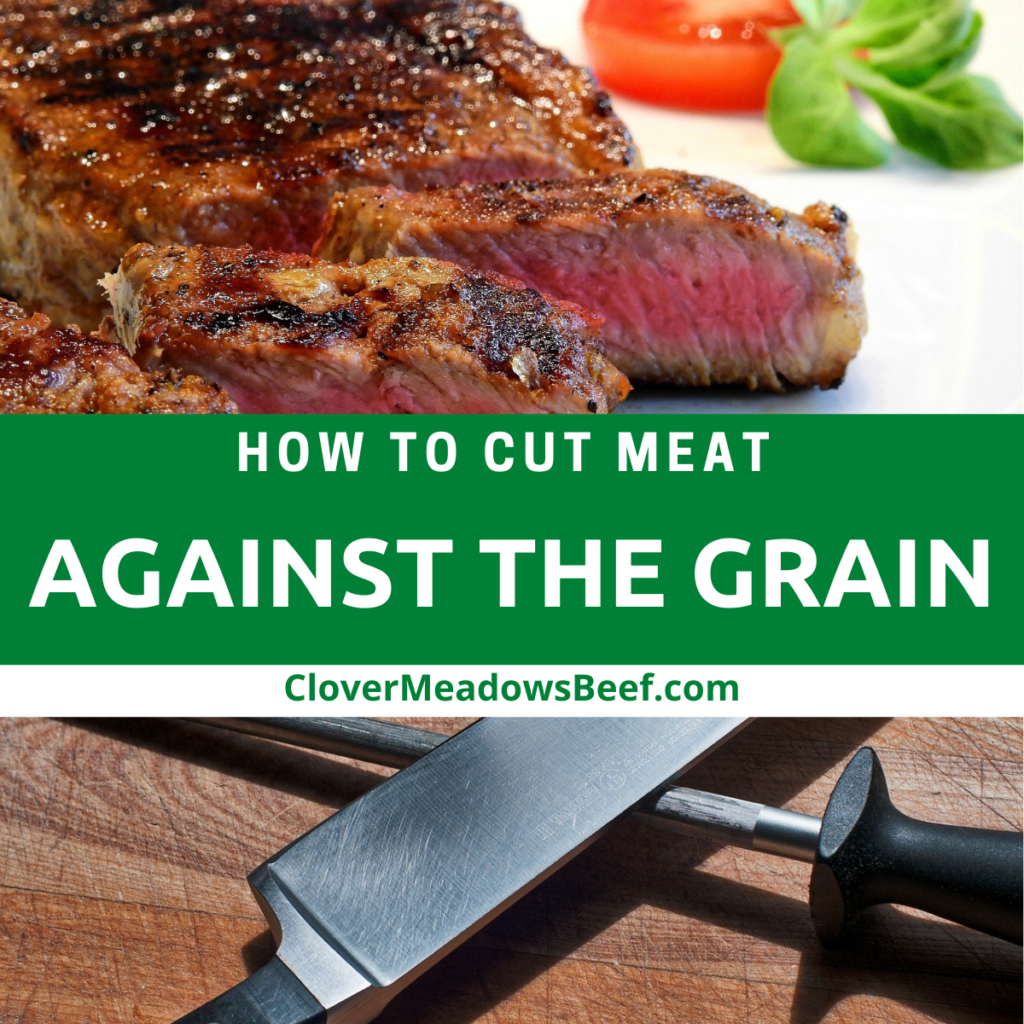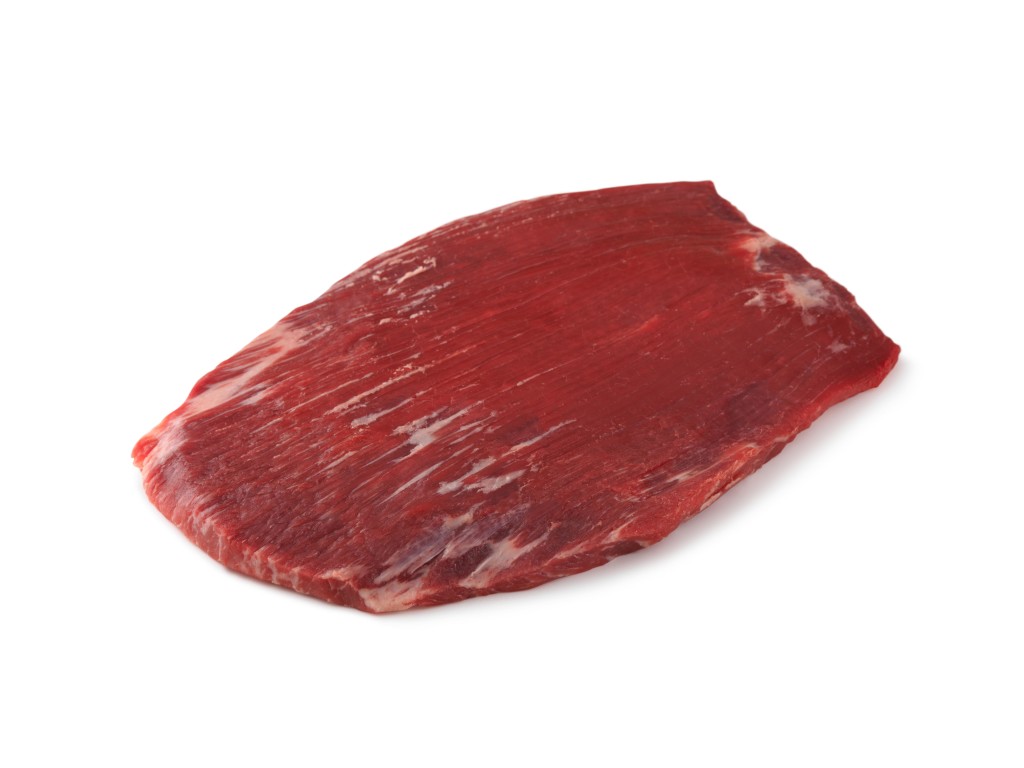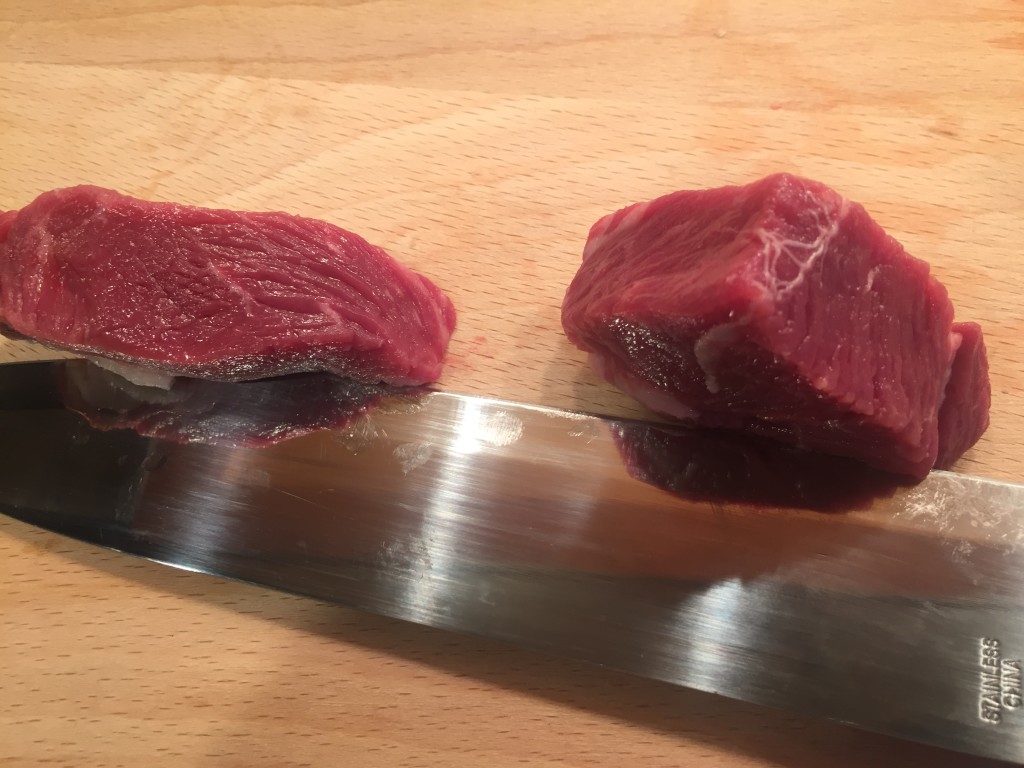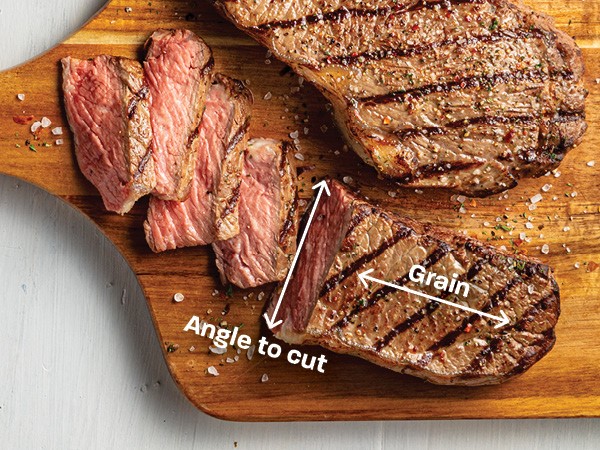How to Slice Beef Against the Grain Youtube
The way you slice a steak can make all the difference in its tenderness. Cutting meat against the grain is something you may have heard before, but do you know what it means and why it's important?

This post contains affiliate links. Please see our disclosure policy for more information
A steak's tenderness is determined by the cut of meat AND how it's cut. That means cutting your steak the right way is extremely important so that you don't accidently ruin a great steak.
For many people, cutting meat against the grain happens naturally because it simply looks right.
Other people mistakenly cut steak with the grain, and then they leave the meal disappointed because their steak was tough. However, had they cut the steak against the grain, they would have enjoyed a melt-in-your-mouth-steak.
Here's how to make sure that you don't ruin a great steak by simply cutting it wrong.
What does it mean to cut meat against the grain?
For starters, let's talk about what the "grain" is. The grain of the meat refers to the direction that the muscle fibers run within the meat. You can see the grain in both cooked and raw meat, and they look like long streaks or lines.
In beef, the areas of the steer that are worked the most — like the neck, shoulder, legs and rump — have the strongest and most pronounced muscle fibers. These are usually the tougher cuts of meat like Bottom Round Roast, Skirt Steak and Flank Steak. In these cuts of beef, the fibers are very apparent and easy to see.
Muscles that aren't used as much — like the loin area — have the weakest muscle fibers. That's where more tender cuts of meat come from such as Tenderloin, Filet Mignon, T-Bone and Ribeye. Steaks from these areas harder to identify the grain. When enjoying these steaks, be sure to take a good look at them before cutting.

How do you know which way the grain runs in meat?
The next time you eat a piece of meat, take a close look at it. When you do, it's likely that you'll find the grain very easily.
If you're having problems finding the grain, you can look at raw steak and find the "lines" that run through the meat and create layers of muscle fiber. Those "lines" are the grain. In order to have a tender steak, you will cut perpendicular to the grain.
If you are eating a bone-in cut of meat, finding the grain of meat is extremely easy. Muscles are attached to bones and the fibers usually run parallel to the bone. When slicing a T-bone, make sure your knife is perpendicular to the bone.

Does the grain run the same way in all cuts of beef?
Because there are so many different cuts of meat, the grain won't be the same in each. This is why it's important to know what the grain looks like and be able to identify it.
How do you cut meat against the grain?
Cutting meat against the grain is very simple. First, look at the meat and find the direction of the grain. Next, angle the knife next to the meat so that it's perpendicular to the grain, and then cut the meat. That's it. You've just made your steak infinitely more tender by cutting against the grain.

Other tips to get the perfect steak:
- In addition to cutting meat against the grain, the thickness of the slice will also help meat be more tender. By cutting slices as thin as possible there are less muscle fibers to chew through.
- Always rest your steak for ten minutes or more. Resting the meat lets the meat's fibers relax and widen so that juices redistribute throughout the cut of beef.
- Slicing against the grain should not be hard work. If it is hard to cut, make sure you're using a high quality steak knife.
Bottom line: The way you slice a steak can make all the difference.
Is it important to cut a steak against the grain? In one word- Yes!
Cutting against the grain breaks up the musle fibers making the steak much more tender and easier to chew.
When you cut meat with the grain, you create long muscle fibers that are stringier and harder to chew. This makes meat tougher to chew and some people call it gamey.
Thankfully, if you do begin to cut meat with the grain, you can always reorient your steak and begin again.
If you'd like even more scientific data, Cooks Illustrated did a fascinating study on this and discovered a slice of steak that was cut with the grain was four times harder to cut than the cut sliced against the grain.
Have beef questions? We are here to help!
Do you want to learn more about beef? You can contact us or below are a few popular beef posts and recipes you may like. In addition, we have an entire ebook about beef that goes through purchasing and preparing beef from a farmers perspective.
- Buying a Cow. How Much Beef Is It?
- Steak Doneness: Temperatures, Touch Test & Charts
- Defrosting Meat: 4 Safe & Easy Ways
- Slow Cooker Pepper Steak
- Prime Rib Roast with Garlic Herb Butter
- Liver and Onions (2 different ways)
We have a weekly e-newsletter where we share about farm happenings, when our next beef availability is, and all things beef. When you do, you'll get a cheat sheet with 9-must-ask questions before buying beef directly from a farmer.
We participate in the Amazon Services LLC Associates Program, an affiliate advertising program designed to provide a means for us to earn fees by linking to Amazon.com and affiliated sites. See our disclosure policy for more details.
Source: https://www.clovermeadowsbeef.com/cutting-meat-against-grain/
0 Response to "How to Slice Beef Against the Grain Youtube"
Post a Comment